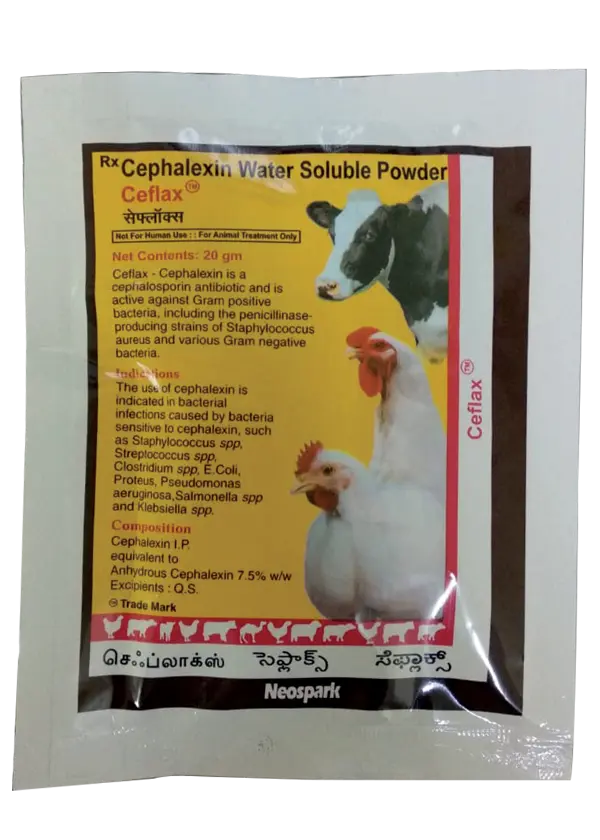Ceflax is Cephalexin - a cephalosporin antibiotic, and is active against Gram-positive bacteria, including the penicillinase-producing strains of Staphylococcus aureus and various Gram-negative bacteria.
Composition:
Cephalexin I.P. equivalent to anhydrous Cephalexin : 7.5% w/w
Pharmacology
The method of action is based on inactivation of the enzyme transpeptidase that is responsible for the synthesis of the bacterial cell wall.
Cephalexin is well absorbed after oral administration. Absorption is delayed in the presence of food particles and results in lower serum concentrations.
Cephalexin is widely distributed throughout the body, but adequately high concentrations in the cerebrospinal fluid occur only in inflammation of the meninges. Cephalexin passes into the placenta.
Excretion is via the kidneys, the bile and also small amounts are excreted in the milk.
No toxic effects in animals due to cephalexin are known.
Indications:
The use of cephalexin is indicated in bacterial infections caused by bacteria sensitive to cephalexin, Such as Staphylococcus spp, Streptococcus spp, Clostridium spp, E.Coli, Proteus, Pseudomonas aeruginosa, Salmonella spp and Klebsiella spp.
Indications, Dosage and Directions for Use:
Poultry
Poultry
| Prevention of early chick mortality | 20 gm daily for 3000 chicks for first 5 days in drinking water. |
|---|---|
| Treatment of Coryza, Fowl Typhoid, Fowl Cholera, Bacillary White Diarrhoea, E.Coli, Gangrenous Dermatitis and to combat secondary infection associated with viral diseases. | 20 gm daily for 1500 chicks or 250 growers or 100 layers for 3-5 days in drinking water |
Large Animals
| Respiratory tract / Urinary tract infections eg: Pneumonia, Bronchitis, Cystitis, Nephritis, Pyrexia of unknown etiology etc | 10 mg of Cephalexin per kg body weight or 20 gm of Ceflax twice daily as a drench or with jaggery or with food. |
|---|---|
| Intrauterine Infections eg: Endometritis, Cervicitis, Pyometra, Retention of placenta, Repeat breeding etc.. | 20 gm to be dissolved in 50 ml of distilled water and given through Intrauterine route. |
or as advised by Consultant Veterinarian
Presentation: 20 gm sachets
